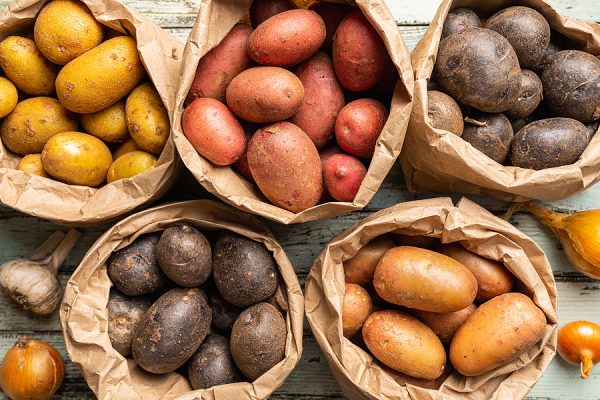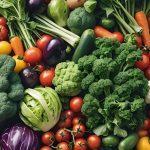By David Blyweiss, M.D., Advanced Natural Wellness
People love their potatoes! The average American eats about 135 pounds of potatoes a year. That’s the equivalent of approximately one potato each day.
Russet potatoes – sometimes called Idaho potatoes – are the most well-known type of potatoes in the United States. We bake them, mash them, fry them, roast them and boil them.
Unfortunately, they’re also starchy and carry a high glycemic load. So they can cause a rapid spike in blood sugar and insulin—which is quickly followed by a sugar crash.
This is why white potatoes are often linked to the onset of type 2 diabetes; and why diabetics are often told to avoid or limit their consumption of white potatoes. A high intake of any type of white potato increases the risk, but French fries are the absolute worst.
Potatoes are also associated with an increase in weight gain… even more so than drinking sugary beverages. It doesn’t matter how the potatoes are cooked, eating too many of them will affect your weight. But again, fried potatoes in the form of French fries or chips are going to have a more negative influence on weight.
Still, potatoes are a vegetable. They’re a great source of potassium, vitamin B6 and vitamin C. They also contain phytonutrients such as carotenoids, flavonoids and caffeic acid. So how can you make your potatoes healthier?
How to Reduce the Glycemic Load of White Potatoes
Potatoes are basically made of up starch, water and nutrients. When a potato is raw, the starch is resistant. This means it is not digestible. But when a potato is heated, the starch becomes highly digestible as a sugar, and rapidly enters the bloodstream.
This is what causes those blood sugar highs and lows. And when they happen too often, it increases your risk of diabetes and obesity.
But interestingly, if you allow the potato to completely cool after cooking, it lowers the glycemic index of the potato.
It makes the starch in the potatoes become resistant, or indigestible, just like insoluble fiber. So it keeps things moving through your digestive systems and helps you pass waste more quickly. It keeps you “regular”.
And like many forms of insoluble fiber, resistant starches can act as a prebiotic. When they are fermented by the microbes in your colon, they produce something called short-chain fatty acids (SCFAs).
SCFAs are a primary energy source for cells of the colon’s lining and help to strengthen the intestinal barrier. They also promote a healthy inflammatory response and have a positive effect on blood sugar, insulin sensitivity and weight.
If you want to increase the amount of resistant starch in your potatoes to help reduce the glycemic load, cooling them in the refrigerator overnight after cooking can raise levels by two to three times. Adding vinegar will further reduce the glycemic value of potatoes.
So something like an Italian potato salad with extra virgin olive oil and vinegar is going to have much less of an impact on your blood sugar than a piping hot baked potato fresh out of the oven.
Still, if the idea of cold potato dishes doesn’t appeal to you, reheating a potato after chilling it will retain some resistant starch, just not as much.
The Better Choice of Potato
Your better option is to eat more sweet potatoes. They are chock full of nutrients and are so much better for you than white potatoes. And there is more to sweet potatoes than the orange ones you are used to. The flesh inside can also be white, yellow, pink or purple.
Any color of sweet potato is great replacement for starchy white potatoes. And their lower glycemic load helps keep blood sugar steady.
But the purple sweet potato, by far, has the highest antioxidant value. The anthocyanin content is similar to what you would find in blueberries and blackberries. Anthocyanins are powerful antioxidants which destroy free radicals that can damage your cells. Plus, purple sweet potato anthocyanins have a high heat resistance, so they don’t get destroyed during the cooking process.
Deep orange sweet potatoes are great too. They are loaded with beta carotene, another antioxidant that protects the body from damaging free radicals.
Regardless of which type of sweet potato you choose, the more intense the color is, the higher the antioxidant value will be. In fact, the color is the antioxidant.
I like to slice my sweet potatoes almost all the way through in a circle, but keep them together, and then put a little olive oil, sea salt and little pepper on them. Then I bake them in the oven. They are absolutely delicious! They are also better for your blood sugar, keep you feeling fuller longer and help you slim down.
SOURCES:
How popular are potatoes? 2022 Maine Potato Board.
Zhang Y, You D, Lu N, Duan D, Feng X, Astell-Burt T, Zhu P, Han L, Duan S, Zou Z. Potatoes Consumption and Risk of Type 2 Diabetes: A Meta-analysis. Iran J Public Health. 2018 Nov;47(11):1627-1635.
Muraki I, Rimm EB, Willett WC, Manson JE, Hu FB, Sun Q. Potato Consumption and Risk of Type 2 Diabetes: Results From Three Prospective Cohort Studies. Diabetes Care. 2016 Mar;39(3):376-84.
Mozaffarian D, Hao T, Rimm EB, Willett WC, Hu FB. Changes in diet and lifestyle and long-term weight gain in women and men. N Engl J Med. 2011 Jun 23;364(25):2392-404.
Akyol H, Riciputi Y, Capanoglu E, Caboni MF, Verardo V. Phenolic Compounds in the Potato and Its Byproducts: An Overview. Int J Mol Sci. 2016 May 27;17(6):835.
Baxter NT, Schmidt AW, Venkataraman A, Kim KS, Waldron C, Schmidt TM. Dynamics of Human Gut Microbiota and Short-Chain Fatty Acids in Response to Dietary Interventions with Three Fermentable Fibers. mBio. 2019 Jan 29;10(1):e02566-18.
Chambers ES, Preston T, Frost G, Morrison DJ. Role of Gut Microbiota-Generated Short-Chain Fatty Acids in Metabolic and Cardiovascular Health. Curr Nutr Rep. 2018 Dec;7(4):198-206.
Muir JG, O’Dea K. Measurement of resistant starch: factors affecting the amount of starch escaping digestion in vitro. Am J Clin Nutr. 1992 Jul;56(1):123-7.
Birt DF, Boylston T, Hendrich S, Jane JL, Hollis J, Li L, McClelland J, Moore S, Phillips GJ, Rowling M, Schalinske K, Scott MP, Whitley EM. Resistant starch: promise for improving human health. Adv Nutr. 2013 Nov 6;4(6):587-601.
Leeman M, Ostman E, Björck I. Vinegar dressing and cold storage of potatoes lowers postprandial glycaemic and insulinaemic responses in healthy subjects. Eur J Clin Nutr. 2005 Nov;59(11):1266-71. Li A, Xiao R, He S, An X, He Y, Wang C, Yin S, Wang B, Shi X, He J. Research Advances of Purple Sweet Potato Anthocyanins: Extraction, Identification, Stability, Bioactivity, Application, and Biotransformation. Molecules. 2019 Oct 23;24(21):3816.



